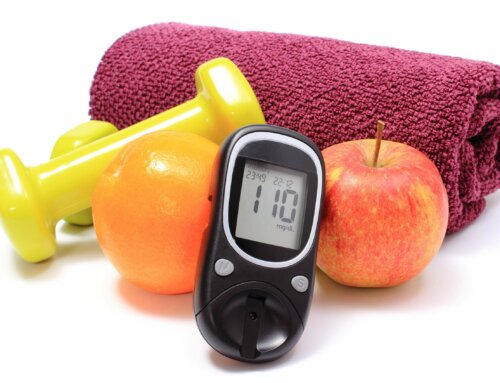There are a variety of complications from uncontrolled diabetes including diabetic neuropathy and peripheral artery disease. Peripheral neuropathy is a specific type of nerve damage that affects the extremities – arms and legs. “Peripheral neuropathy is damage to the peripheral nervous system which transmits information from the brain and spinal cord to every other body part”. It usually presents as pain, tingling, pricking sensations, burning, temperature insensitivity and muscle weakness. As it progresses it may develop into complete numbness and atrophy if not addressed. Peripheral neuropathy can cause lack of sensation when small injuries such as blisters or cuts occur. Due to the lack of feelings you may miss the signs of an infection beginning which could lead to a major infection and possible amputation. Aside from peripheral neuropathy, people who suffer with diabetes are more likely to experience PAD or peripheral artery disease.
Listed below are possible reasons and treatments for these maladies which may affect those with diabetes.
- Prevention: The best way to prevent peripheral neuropathy is to keep blood sugars controlled with an A1C level at 7% or below. Certain patients may need to keep their A1C higher due to pre-existing heart disease so always consult with your physician.
- Initial Diagnosis: Once peripheral neuropathy is diagnosed an initial course of action could include using OTC medications such as ibuprofen [Advil, Aleve] or acetaminophen [Tylenol]. Be aware, taking too many OTC pain relievers can cause GI distress, stomach ulcers, or liver and kidney issues. It should not be considered a long term solution.
- Developing Discomfort: As symptoms increase and pain becomes more intolerable, prescription medications are usually substituted. Some prescription medications of choice include opiods such as Tramadol. Opiods such as Morphine may come with multiple side effects including restlessness, depression, confusion and personality changes. “Morphine is said to reduce symptoms by 40-50%”. Anti-depressants have been used for neuropathy including Cymbalta. Another prescription medication more commonly prescribed is anti-convulsants such as Neurontin or Lyrica. These medications can cause severe fatigue so talk to your health care provider to see which one will be the most efficient for you. Lyrica and Neurontin may aid with sleep if taken in the evening.
- Supplements: Certain supplements may help with tissue repair and possibly prevent further damage. ALA, alpha–lipoic–acid, in daily doses of 600-1200mg may be prescribed in supplement form to help with nerve rejuvenation and could decrease insulin resistance. Food sources of ALA include carrots, beets, yams and tomatoes. Seeds are also excellent sources of ALA. Chia, hemp or flaxseeds can be added to yogurt, cereal or casseroles for flavor and benefits. B vitamins are often depleted in people with diabetes, especially those who take Metformin, and should be replaced since it may mimic diabetic neuropathy. B1 or thiamine can be found in fish, pork, peas, nuts and asparagus. B5 or pantothenic acid is found in sunflower seeds, poultry, mushrooms, eggs, pork, veal and beef. B6 is in spinach, fortified cereals and seafood. B12 which is the one most people are deficient in is contained in mussels, soy products, clams and crab. You may consider taking a complete B vitamin supplement if you think you are not getting enough from food. Vitamin B12 is absorbed best in a sublingual form which dissolves under the tongue. Vitamin D, found in sunlight, has been known to help nerve functioning as well as assisting in bone growth and lowering blood pressure. Vitamin D may reduce swelling which also causes nerve pain. You could use a liquid supplement to boost your vitamin D level. Always consult your health care provider prior to starting any new supplements even if they are OTC. Some prescriptions interact with these supplements.
- Physical Therapy: Physical therapy is a reasonable form of therapy focusing on nerve discomfort. Your health care provider will need to write a prescription for program coverage. They will work on balance issues to keep you safe from falling due to reduced sensation as well as strengthening techniques. They can address diabetic neuropathy with light therapy, electric nerve stimulation and alternating heat and ice treatments.
- Acupuncture: This Chinese practice is used to increase blood flow to the affected area which may nourish the tissues, decrease pain and repair nerve function. “The mechanism of action may be speculative but studies have shown that acupuncture is effective in long term management of peripheral neuropathy”. Pulses are checked as well as tongue texture and color and a full history is taken. They may recommend herbal supplements along with needle or cupping treatments. Make sure your health care provider knows you are using alternative treatments as well.
- Walking: Using 2-5 minute walks with short rest periods may help build up stamina. Using a walker with a seat is helpful for instant short rest periods. When sensation is limited use a cane with 4 prongs or a walker for balance.
- Water exercises: Swimming laps, doing water aerobics or simply walking back and forth in the pool are excellent for people with diabetic neuropathy. Remember to wear water shoes at all times for safety and protection.
- Stationary bicycles or arm ergometers. These exercise equipment machines are easier for people who suffer from peripheral neuropathy to use. Most gyms, community centers and fitness rooms at complexes have them. You may consider purchasing one for home use.
- Keep bedding directly off feet by using a bed cradle: Adjust blankets and sheets so that they are untucked and loose. Neuropathy pain can occur from the slightest weight applied to the feet.
- Other simple tips with peripheral neuropathy: Maintain a normal weight. Eat a balanced diet and join a supervised exercise program. Decrease your alcohol intake. Avoid toxin exposure whether by breathing or direct skin contact. Learn relaxation techniques such as meditation, biofeedback, deep breathing and yoga.
- Monitor new and different pains: The National Heart, Lung and Blood Institute estimates “one in three diabetic adults over 50 also have PAD or peripheral artery disease”. This may be in addition to diabetic neuropathy. PAD or PVD (peripheral vascular disease) is another serious condition caused by blocked blood vessels in the legs due to plaque formation. It causes decreased blood and oxygen to the tissues. It often forms due to the triad of elevated blood fats, elevated blood pressure and insulin resistance, all of which are common with diabetes. It may present as cramping or heaviness in the calves, thighs and buttocks after walking just a few steps. Having PAD increases the risk for a stroke and heart attack. Having cold feet due to reduced blood flow, seeing a bluish tinge, intense leg fatigue, wounds that do not heal, weak pulses, poor nail or hair growth on the toes may be other symptoms of PAD.
- Stop smoking: The number one way to correct PAD is to stop smoking. The other important points are to maintain blood pressure, cholesterol levels and A1C.
- Pain management: Similar to diabetic neuropathy, PAD may be treated with OTC pain relievers, opiods- such as Tramadol, anti-seizure medications such as Neurontin, or applying Capsaicin, which is made from ingredients in hot peppers, an external cream, directly onto the skin.
- Treatments: To help with PAD symptoms and progression many of the treatments are similar to dealing with diabetic neuropathy. Consider weight loss, reducing alcohol, walking daily, a healthful unsaturated fat-eating plan and possibly taking a blood thinner such as a 81mg baby aspirin, after discussion with your doctor, for management of PAD.
These complications of diabetes are not guaranteed to happen. Learn what they are and find out ways to prevent them. You are the one who can take control of future problems by managing your diabetes today! Be part of the solution.
Always feel free to email me your questions at [email protected] if you would like to share them with ADW diabetes
NOTE: Consult your Doctor first to make sure my recommendations fit your special health needs.











Quite impressive and informative post it is. Thanks for sharing it.